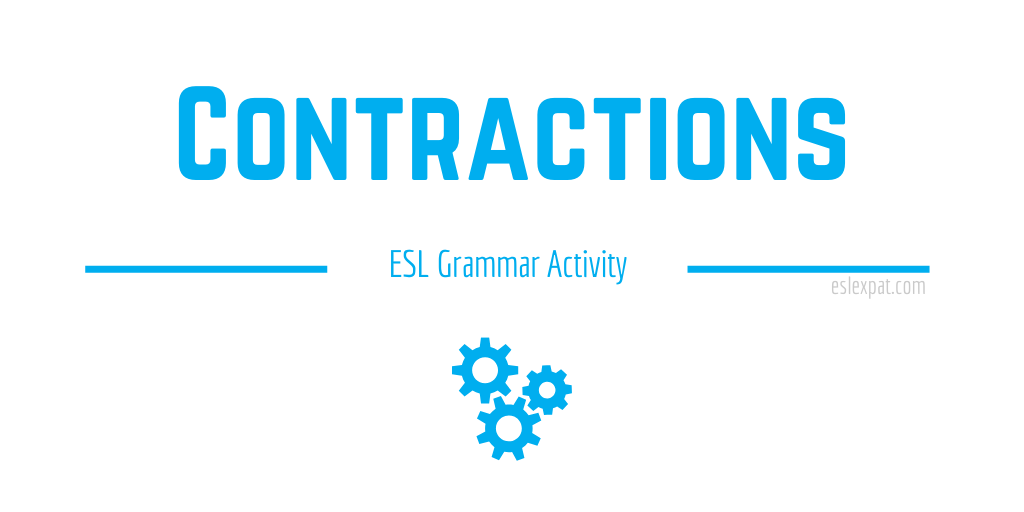|
Download ESL Books + Free PDFs
Save 25% on ESL Books for Teachers & Students Visit the ESL Expat Store and enter "SAVE25" at checkout! |
This activity helps students understand and use contractions correctly by combining subject pronouns and auxiliary verbs (e.g., I am → I’m, they will → they’ll) or negative forms (do not → don’t). Students will practice forming contractions, identifying them in sentences, and using them in conversation to improve fluency and comprehension.
Student Level: Beginner, Intermediate

Contractions ESL Activity Preparation:
Prepare a set of sentence strips, some with contractions (e.g., She’s going to the store), and others with the full forms (e.g., She is going to the store).
Also, create a matching activity where students pair full phrases with their contracted forms. Provide a worksheet with sentences missing contractions, requiring students to rewrite them correctly.
For an interactive component, prepare a set of flashcards with contractions on one side and their expanded forms on the other. These will be used in a class challenge where students must quickly match or convert between forms.
Contractions ESL Activity Guidelines:
Start by explaining contractions and their purpose, emphasizing how they make speech and writing more natural. Provide common examples, such as he is → he’s, they have → they’ve, and do not → don’t. Highlight that contractions are common in informal speech and writing but are generally avoided in formal writing.
Distribute the sentence strips and ask students to work in pairs to match the full-form sentences with their contracted versions. Once completed, review the pairs as a class, discussing how the contractions shorten speech without changing meaning.
Next, give students the worksheet with sentences missing contractions, such as You (are) my best friend. They must rewrite each sentence using the correct contraction (You’re my best friend). After completion, review their answers and discuss common mistakes, such as confusing you’re and your or they’re and their.
For a fun challenge, use the contraction flashcards in a speed game. One student holds up a full phrase (we will), and the first to say the correct contraction (we’ll) gets a point. Reverse the game by showing the contraction and having students say or write the full form.
Follow-Up ESL Activities:
To reinforce learning, have students write a short dialogue using at least five contractions and then read it aloud with a partner.
Alternatively, conduct a listening activity where students listen to a conversation and identify contractions used. Another option is to play a contraction-based “telephone” game where students whisper a sentence with contractions down a line, seeing if the final sentence stays correct.
More ESL Grammar Activities for Kids and Adults:
- Conditional Sentences
- Passive Voice
- Pronouns
- Adverbs
- Adjectives
- Prepositions
- Uncountable Nouns
- Article Usage

